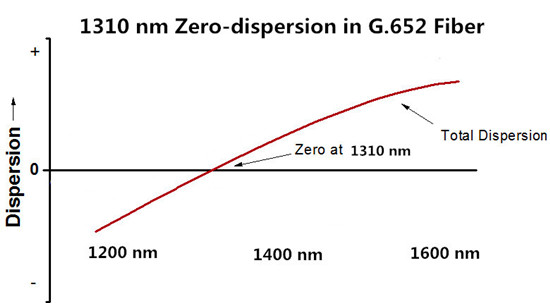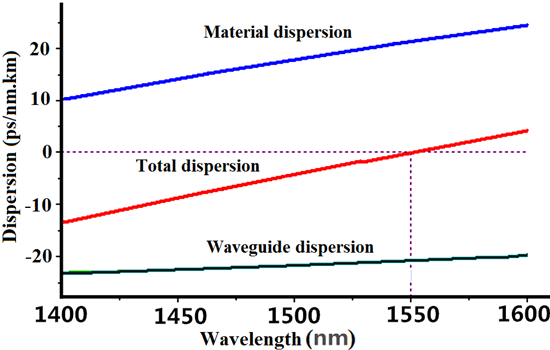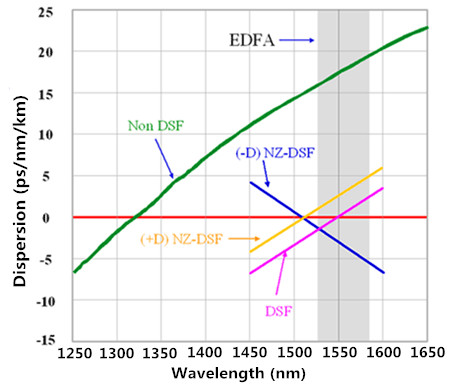According to the light transmission mode, optic fibers can be classified into single-mode and multimode. It’s easy to categorize multimode fiber into four types of OM1, OM2, OM3 and OM4. However, when it comes to single-mode, it may not be as simple as you think. The classification of single-mode fiber is much more complicated than multimode fiber. ITU-T G.65x series and IEC 60793-2-50 (published as BS EN 60793-2-50) are two primary sources for single-mode fiber specification. This article will mainly focus on the ITU-T G.65x series.
The following table introduces 19 ITU-T specifications of single-mode fiber:
| Name | Type |
| ITU-T G.652 | ITU-T G.652.A, ITU-T G.652.B, ITU-T G.652.C, ITU-T G.652.D |
| ITU-T G.653 | ITU-T G.653.A, ITU-T G.653.B |
| ITU-T G.654 | ITU-T G.654.A, ITU-T G.654.B, ITU-T G.654.C |
| ITU-T G.655 | TU-T G.655.A, ITU-T G.655.B, ITU-T G.655.C, ITU-T G.655.D, ITU-T G.655.E |
| ITU-T G.656 | ITU-T G.656 |
| ITU-T G.657 | ITU-T G.657.A, ITU-T G.657.B, ITU-T G.657.C, ITU-T G.657.D |
Each type has its own area of application and the evolution of these optical fiber specifications reflects the evolution of transmission system technology from the earliest installation of single-mode optical fiber to the present day. Choosing the right one for your project can be vital in terms of performance, cost, reliability and safety. Now, let’s have a look at the differences of G.65x series specifications for single-mode fiber respectively.
G.652
The ITU-T G.652 fiber is known as standard SMF (single-mode fiber) and is the most commonly deployed fiber. It comes in four variants (A, B, C, D). A and B have a water peak. C and D eliminate the water peak for full spectrum operation. The G.652.A and G.652.B fibers are designed to have a zero-dispersion wavelength near 1310 nm, therefore they are optimized for operation in the 1310nm band. They can also operate in the 1550nm band, but it is not optimized for this region due to the high dispersion. These optical fibers are usually used within LAN, MAN and access network systems. The more recent variants (G.652.C and G.652.D) feature a reduced water peak that allows them to be used in the wavelength region between 1310 nm and 1550 nm supporting Coarse Wavelength Division Multiplexed (CWDM) transmission.

G.653
G.653 fiber was developed to address this conflict between best bandwidth at one wavelength and lowest loss at another. It uses a more complex structure in the core region and a very small core area, and the wavelength of zero chromatic dispersion was shifted up to 1550 nm to coincide with the lowest losses in the fiber. Therefore, G.653 fiber is also called dispersion-shifted fiber (DSF). G.653 has a reduced core size, which is optimized for long-haul single-mode transmission systems using erbium-doped fiber amplifiers (EDFA). However, its high power concentration in the fiber core may generate nonlinear effects. One of the most troublesome, four-wave mixing (FWM), occurs in a Dense Wavelength Division Multiplexed (CWDM) system with zero chromatic dispersion, causing unacceptable crosstalk and interference between channels.

G.654
The G.654 specifications entitled “characteristics of a cut-off shifted single-mode optical fiber and cable”. It uses a larger core size made from pure silica to achieve the same long-haul performance with low attenuation in the 1550nm band. It usually also has high chromatic dispersion at 1550 nm, but is not designed to operate at 1310 nm at all. G.654 fiber can handle higher power levels between 1500 nm and 1600 nm, which is mainly designed for extended long-haul undersea applications.
G.655
G.655 is known as non-zero dispersion-shifted fiber (NZDSF). It has a small, controlled amount of chromatic dispersion in the C-band (1530-1560 nm), where amplifiers work best, and has a larger core area than G.653 fiber. NZDSF fiber overcomes problems associated with four-wave mixing and other nonlinear effects by moving the zero-dispersion wavelength outside the 1550nm operating window. There are two types of NZDSF, known as (-D)NZDSF and (+D)NZDSF. They have respectively a negative and positive slope versus wavelength. Following picture depicts the dispersion properties of the four main single-mode fiber types. The typical chromatic dispersion of a G.652 compliant fiber is 17ps/nm/km. G.655 fibers were mainly used to support long-haul systems that use DWDM transmission.

G.656
As well as fibers that work well across a range of wavelengths, some are designed to work best at specific wavelengths. This is the G.656, which is also called Medium Dispersion Fiber (MDF). It is designed for local access and long haul fiber that performs well at 1460 nm and 1625 nm. This kind of fiber was developed to support long-haul systems that use CWDM and DWDM transmission over the specified wavelength range. And at the same time, it allows the easier deployment of CWDM in metropolitan areas, and increases the capacity of fiber in DWDM systems.
G.657
G.657 optical fibers are intended to be compatible with the G.652 optical fibers but have differing bend sensitivity performance. It is designed to allow fibers to bend, without affecting performance. This is achieved through an optical trench that reflects stray light back into the core, rather than it being lost in the cladding, enabling greater bending of the fiber. As we all know, in cable TV and FTTH industries, it is hard to control bend radius in the field. G.657 is the latest standard for FTTH applications, and, along with G.652 is the most commonly used in last drop fiber networks.
Conclusion
There are different types of single-mode fiber used for different application. G.657 and G.652 are typically favored by planners and installers, and G.657 is particularly deployed for FTTH applications because of a larger bend radius. And G.655 has been taken the place of G.643 used for WDM system. In addition, G.654 is usually applied to the subsea area. To know more information about single-mode fiber, you are welcome to visit the website at FS.COM.
The article originates from http://www.fiber-optic-cable-sale.com/overview-of-single-mode-fiber-types.html.
没有评论:
发表评论